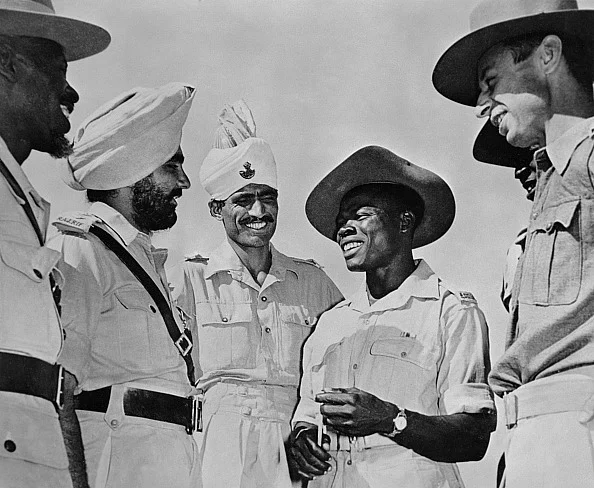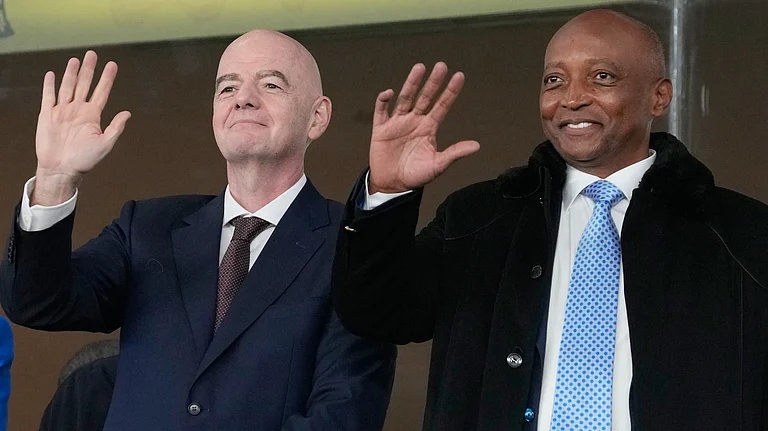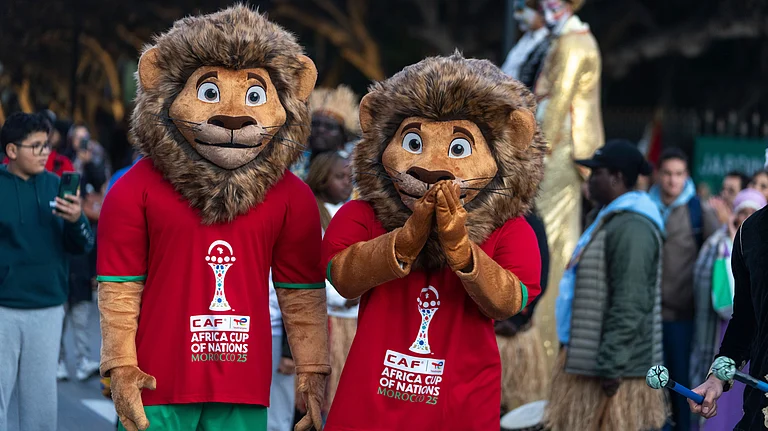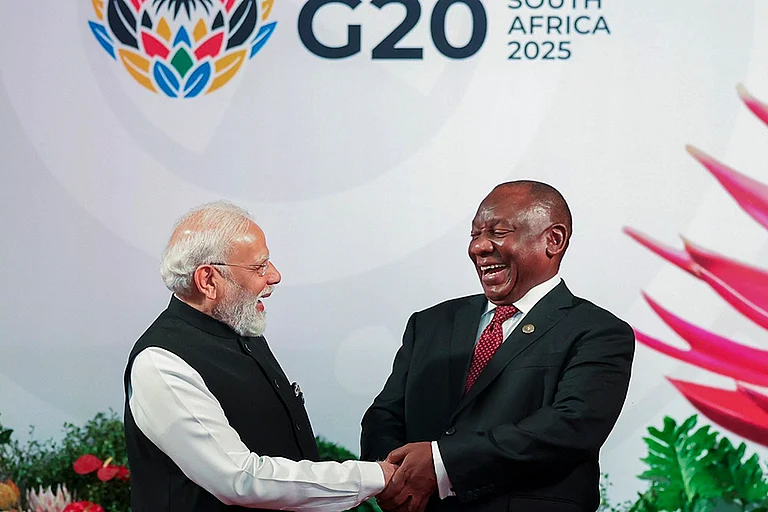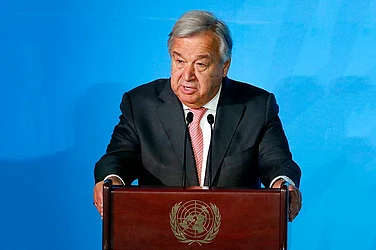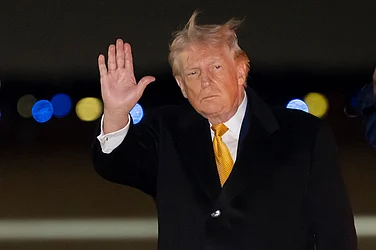India and Africa have relations that go back millennia, especially at people to people level and the Government of India has paid special attention to strengthening these. The visible symbols include the incorporation of the African Union (AU) as a permanent member of the G20 during the Indian Presidency, the opening of the first- ever campus of National Forensic Sciences University in Uganda and the emblematic opening of the first-ever abroad campus of the Indian Institute of Technology (IIT) in Tanzania. The reintroduction of Cheetahs brought from Africa and their release by PM Modi in Kuno is another living example of these abiding relations.
The legacy of a colonial past and a shared freedom struggle stitched bonds of solidarity between India and the African countries. African leaders and founding fathers were inspired by the Indian freedom struggle and Indian freedom achieved in 1947 became the kairotic moment that spurred all countries in Africa (and Asia) to strive to throw off their colonial yoke. Almost all African countries gained independence between 1947 and 1975. The founding fathers of several countries are well known in India. Names of African leaders such as Kenneth Kaunda (Zambia), Jomo Kenyatta (Kenya), Julius Nyrere (Tanzania), Samora Michel (Mozambique), Sam Nujoma (Namibia), Habib Bourguiba (Tunisia) continue to be easily recognised and respected in India. Africa is also enmeshed in our everyday lives and in New Delhi itself there exists an Africa Avenue. There are other roads in Delhi named after great African leaders. The Nelson Mandela Marg, Kwame Nkrumah Marg, Gamal Abdel Nasser Marg are prime examples of this. The diplomatic area of Chankayapuri also hosts the beautiful ‘India-Africa Friendship Rose Garden’ that was opened in 2015, just before India hosted the 3rd India-Africa Forum Summit.
The presence of an Indian Diaspora in Africa is well documented, whether they went as indentured labour, traders, teachers or professionals. However, it surprises many that there is a substantial African Diaspora in India, besides the 24,000 African students who study in India. There are more than 50,000 people of African origin living in parts of Gujarat, Karnataka, Maharashtra, Goa and Telangana. They are called the ‘Siddis’—a North African word for Honorable. Their forefathers were brought to India as slaves, royal bodyguards and for employment in the military and security apparatus of several kingdoms. They were recognised for their bravery and military prowess and made a mark in Indian history. However, their success is also a living testimony to the liberalism, open-mindedness and accepting and assimilating nature of the Indian society in which they lived and thrived as a religious and ethnic minority. Names such as Jamal ud-Din Yakut and Malik Ambar stand out. Yakut was an African Siddi slave turned nobleman who was a close confidant of Razia Sultan the First and only female ruler of the Delhi Sultanate. The story of this relationship went beyond court politics and possibly became a tragic love story, of an unmarried queen who relied upon, trusted and possibly fell in love with a black-skinned slave, much to the discomfiture of the nobles and courtiers. It has been immortalised in a 1983 film titled ‘Razia Sultan’, in which the character was played by cine star Dharmendra with Hema Malini as Razia Sultan. Another famous African origin person, Malik Ambar, came to India as a slave from present-day Ethiopia and rose up in the ranks to become the Prime Minister of the Ahmednagar sultanate. He challenged the might of the Mughals and the Bijapur sultans and is widely regarded as a pioneer of guerilla warfare in the Deccan. He is credited with founding the city of Khadki in 1610 that was renamed as Aurangabad by Mughal emperor Aurangzeb in 1653. In 2023, the city has been renamed as Chhatrapati Sambhajinagar.
African presence in India even established a dynasty called the ‘Habshi Dynasty’ of Bengal that comprised four rulers who ruled from 1486-1493. The dynasty arose during the time of Delhi Sultnate when Bengal enjoyed considerable independence from the capital. It was a rich province with a large population and a mix of Muslim aristocracy and rich Hindu landlords. To ensure peace and harmony and empower his army, the then ruler named Rukh ud din Barbak brought more than 8,000 Abbysinian slaves and soldiers. A series of weak rulers after him made these African soldiers to gain power and one of them called Sultan Shahzada killed the ruler of the time and took over calling himself Ghiyas ud din Barbak Shah, becoming the first ruler of the Habshi dynasty. He was killed within six months by another African and the killer declared himself the new ruler calling himself Saif ud din Firoz Shah. His reign lasted for about two years but left a long-lasting legacy—the 85-foot tall, five-storeyed Firoz Minar in Gaur near Malda. The tower resembles the Qutub Minar of Delhi. Two more rulers followed him, the last being replaced by Alaudin Hussain in 1493 who founded the Hussain Shahi dynasty of Bengal and ended the run of the Habshi dynasty. The new ruler made sure to expel all Africans who then drifted to Gujarat and the Deccan where they then went on to dominate the Bijapur and Ahmednagar Sultanates.
African-origin dynasties and states also arose in the Western part of India. On the Konkan Coast in present-day Raigad of Maharashtra, another dynasty of African rulers came up—the Siddis of Janjira. The rulers were addressed as Nawab and were entitled to an 11-gun salute by the British authorities. Another independent state Sachin came up in present-day Surat of Gujarat. The rulers also bore the title of Nawab and were entitled to a nine-gun salute by the British authorities. Zubeida Begum, who starred in the first talking film of India, “Alam Ara”, belongs to Sachin state. Both states continued to exist till India’s independence when they signed the instrument of accession for their merger into India.
There is today an Indian Diaspora in Africa that numbers over 3.5 million and calls Africa home, there is also a significant African Diaspora that calls India home, safely ensconced and enmeshed in the history, culture and society of the country.
(Views expressed are personal)
(Puneet Kundal is an IFS officer, Additional Secretary, Ministry of External Affairs, and former Ambassador of India to Tunisia)







